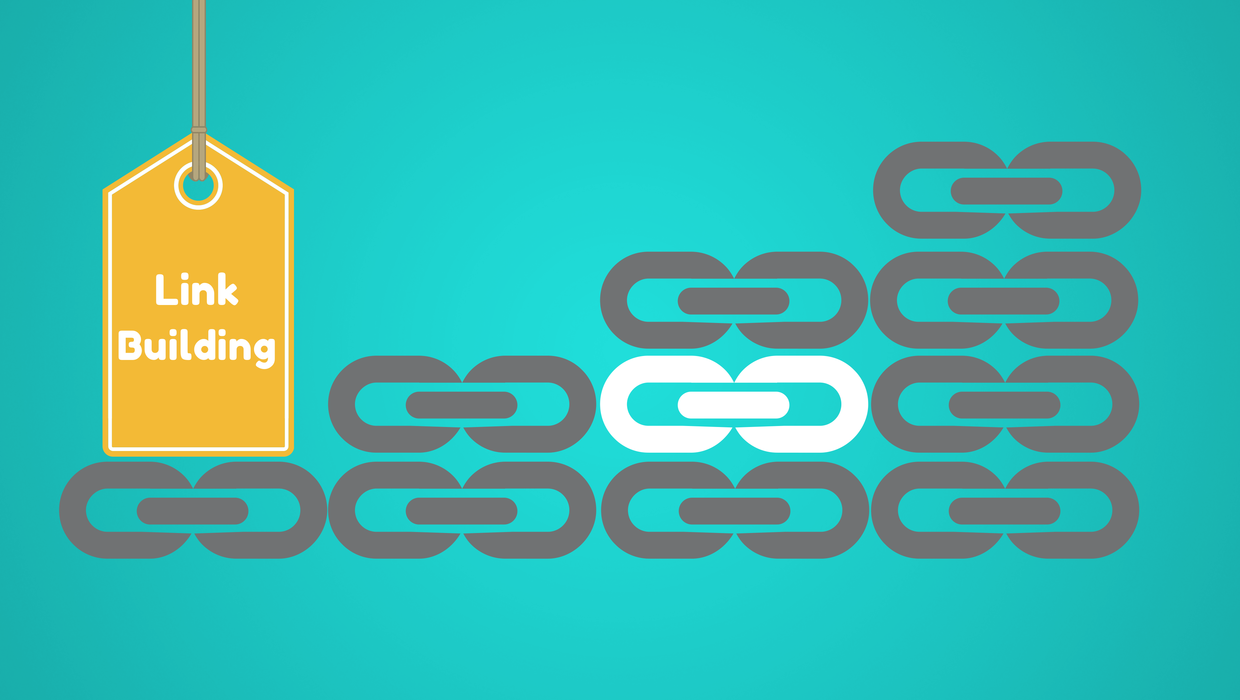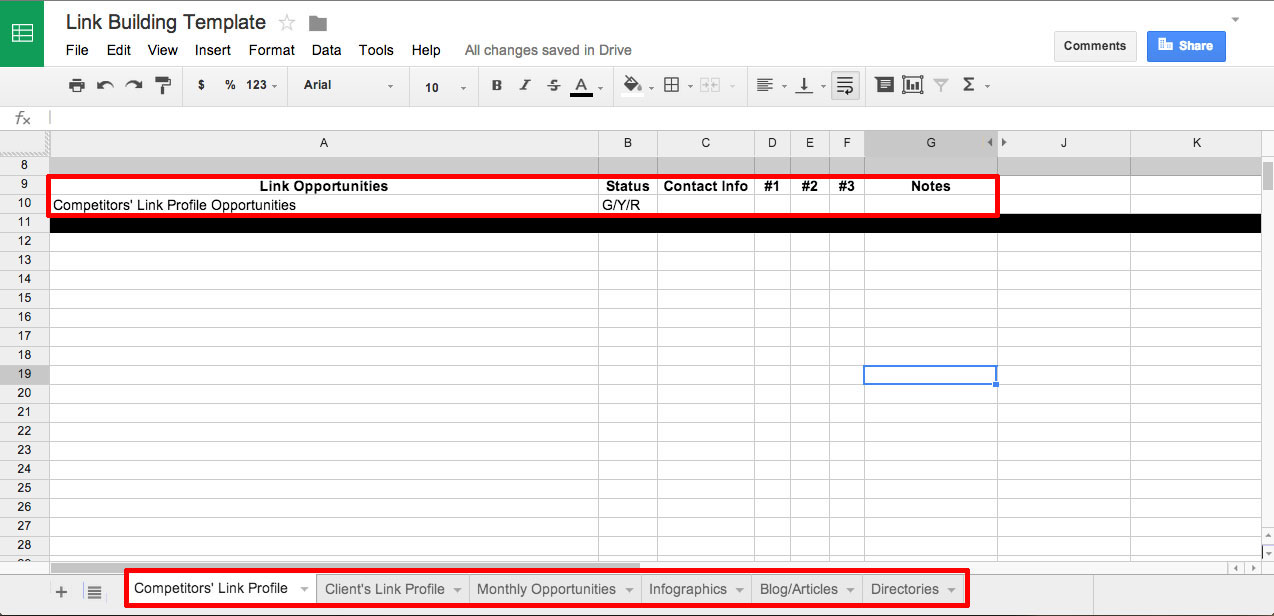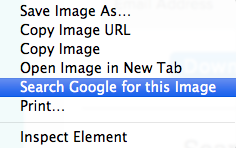
Throughout 2014, there has been a lot of discussion regarding the value of links. This is due to the fact that Google tested a version of their search engine that doesn’t include links as a signal. What they found, however, was that despite the opportunity for spam, backlinks still offer one of the best signals for quality search results. Because of this, links are still a huge part of Google’s algorithm, albeit in a slightly different manner.
While the theory of Google wanting to phase out links is there, it is much more plausible that they will continue to focus on the quality of backlinks instead of getting rid of them altogether. This is why the link building campaign has changed and why building & tracking as many quality links as possible is more important than ever to getting the best possible ROI for your campaigns.
Here are tips for doing just that:
Organize
In order to run a successful link building campaign, there is nothing more important than organization. First start by creating a spreadsheet with consistent columns between tabs. These can be the URL related to each respective tab, the status of the mention, the contact info for each, a column for each outreach attempt, a column for any additional notes, etc.

And depending on the depth of the campaign, the different tabs could include competitors’ links, your client’s links, monthly mentions (for both the client and their competitors), infographics, blog/article opportunities, and any niche directories.
- The link profile of a client’s competitors is usually the first tab on all of our link building spreadsheets. Depending on the nature of the client’s industry as well as other variables used to decide the definition of a competitor, this list can be well into the thousands. First, decide what quality means to you and then skim through the list, keeping only the best-looking sites with a respectable domain authority. Remember that just because the competition is doing it doesn’t mean it is the right decision.
- The next tab includes the link profile of the clients. Even though they already include links for our clients and thus serve no purpose for gaining links, they are still part of the link building campaign. If they have linked to our client in the past, the chances of them mentioning our client again is exponentially higher when compared to other opportunities.
- Monthly mentions is the next tab on our spreadsheet. Each month we go in and look for mentions of our clients and their competitors over the past four weeks and add any quality finds to our list. When doing the search we make sure to exclude sites we already know we aren’t going to use. These will often include mentions from the client’s site, job postings & PR sites, for example.
Below is an example of how it would read when entered Fresh Web Explorer.

Both the “-rd:” and “-site:” bits need to include URLs. - The infographics tab is included to track any links gained through infographics we have created for our clients. Using Google’s reverse image search, we go through each of our clients’ infographics, adding any relevant URLs along the way. After searching for the image the first time, do it again at the end of each month to track any mentions, but be sure to utilize the advanced search options and include only the previous month to avoid any duplicates.

- The blog/article opportunities tab is exactly that, opportunities located either through manual research or competitive analysis. The manual work consists of tracking niche and relevant sites/bloggers not found through competitive analysis. Often times when going through the competitor’s mentions there will be opportunities for your client to provide content or receive a mention on behalf of a blogger. If providing the content, we recommend providing content of 1500 words or more.
- Directories are usually the last tab because most have fallen out of favor with Google. Whether it is an article directory or simply a link directory, Google has made clear their intentions for penalizing links from low domain authority sites, so we usually don’t recommend this route unless the directories in question are high-end, well maintained, or extremely niche.
Tools
There are a variety of tools to help simplify the link building process. These are some of our favorites:
- Moz
We use Moz Analytics throughout the link building process. We use it first to collect the link profiles for both clients and competitors and then again at the end of each month to track monthly mentions. - Domain Tools
We use Domain Tools to track down contact info for the sites that don’t make it easy to get in touch. Often times the email will be a generic one, but on many occasions it has resulted in getting in touch with the right person. Any “WhoIs” substitute will suffice. - Google Images
Searching Google for images is invaluable when tracking infographics. Find the image you are looking to track, right click, and voilà!

- ThingLink
ThingLink is a new tool we have just started using that allows us to add links to images. We are using these in our infographics and other content pieces to help drive traffic, increase social media conversion and create a more extensive and unique link building strategy overall. Analytics included!
Outreach
When all opportunities have been identified, it’s time to start the outreach process.
One thing that makes every opportunity easier to track down is the right contact info. For example, when it comes to a blogger, make sure that the email you save for them is their actual email, or perhaps an editor of the site in some instances. You are less likely to receive a response from a generic email like info@1234abc.com or a contact submission form, so take the time required to find the best email possible. Sometimes you will need to reach out to multiple email addresses before finding the right one. Any contact info found is valuable for potential future links.
When sending the email, an outreach template is usually a good idea to both save time and to add a consistent tone when multiple people are managing the campaign. Make sure to include the correct link for each mention and if at first you don’t succeed, try changing and personalizing the email next time for better results.
It’s also important to mention that, when reaching out for links, to not ask for specific anchor text. Asking for anchor text can make a link seem forced or unnatural, and Google continues to pay close attention to keyword-heavy anchor text.
Again, we are looking for quality links, and an unnatural-looking link doesn’t qualify as quality.
Also, asking for specific anchor text will raise some red flags and reduce your chances of getting an immediate link, while also hindering the potential for future links.
Collaborate
One of the most difficult things to manage when building a successful link building campaign is the time it takes to do it right. To overcome this, use as many resources you have at your disposal, such as the tools mentioned above, but don’t forget to use the most powerful tool of all: the client. The client is the expert in their industry and many of our clients have experience building links. They may already have some ideas of when and where they would like to have their content posted. The best way to utilize this resource is to have an honest discussion with them and engage their knowledge and interest in contributing to the link building campaign.
If you feel like they could be a valuable resource, simply inform them of the recent algorithm changes and the new process for building and tracking links. If they are going to contribute, you will want to give them access to the Google spreadsheet. This way they can add or subtract opportunities as they see fit. When doing this, however, it is important to communicate with the client to make sure there is a concise and consistent plan. If you don’t see an opportunity for the client to contribute, sharing the spreadsheet will at least let them see the progress of the campaign in real time.
Content
The overall theme of any good link building strategy is—again—quality over quantity. This reigns true for both links and content, but it is the quality of the content that dictates the quality of the links. The best way to gain quality links is to earn them with quality content. By producing content that is informative to all and beneficial to your customer base, you stand a better chance at gaining quality links. The most effective content will also increase the quality of traffic to your website. This is because people that are interested in your content are the best possible leads.
A few content creation tools we like use include:
- Canva is an awesome tool to create appealing images in no time at all. The featured image at the top took me about 5 minutes to make!
- Piktochart is our favorite infographic tool and the results have been amazing.
- Portent’s Content Idea Generator helps get the creative juices flowing and is a blast to use.
- Google Keyword Planner is another idea generator to help determine what sort of content is being searched.
- Übersuggest will generate different ways to phrase an idea before putting it into the keyword planner.
One technique we use is to create original graphics, photos and/or GIFs for our clients to offer to other bloggers.
A recent example of this comes from a client of ours who is a prestigious school within the chiropractic industry. They were looking for a way to reconnect with their alumni, in which they have many all over the world, and many who have started their own blogs. We recommended that they offer a linked alumni badge to all of their alumni looking to use such a thing for either their website or blog.
We are currently coordinating this as well as an effort for all alumni to have access to a database of relevant, original images to use on their sites/blogs.
So remember, be creative with your content and provide value to your current and potential customers. If you don’t, somebody else will.
Please share any tips of your own in the comments below.

